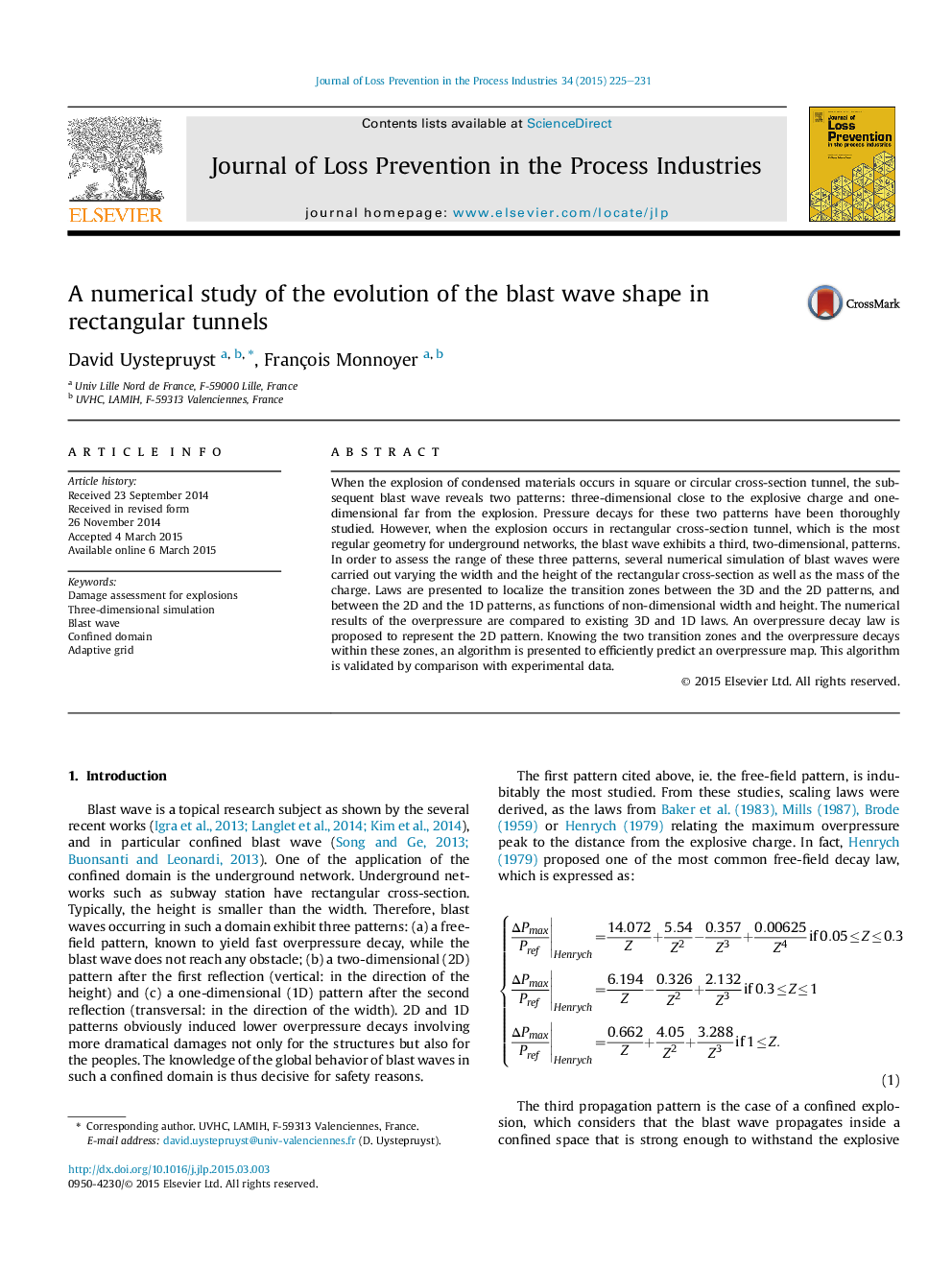| Article ID | Journal | Published Year | Pages | File Type |
|---|---|---|---|---|
| 586009 | Journal of Loss Prevention in the Process Industries | 2015 | 7 Pages |
•Numerical detonation in rectangular cross-sectional confined domain.•Proof of the existence of three patterns: 3D, 2D and 1D.•Determination of the two transition zones as functions of non-dimensional numbers.•Prediction of overpressure values for the three patterns (complete map).•Validation comparing existing experimental data.
When the explosion of condensed materials occurs in square or circular cross-section tunnel, the subsequent blast wave reveals two patterns: three-dimensional close to the explosive charge and one-dimensional far from the explosion. Pressure decays for these two patterns have been thoroughly studied. However, when the explosion occurs in rectangular cross-section tunnel, which is the most regular geometry for underground networks, the blast wave exhibits a third, two-dimensional, patterns. In order to assess the range of these three patterns, several numerical simulation of blast waves were carried out varying the width and the height of the rectangular cross-section as well as the mass of the charge. Laws are presented to localize the transition zones between the 3D and the 2D patterns, and between the 2D and the 1D patterns, as functions of non-dimensional width and height. The numerical results of the overpressure are compared to existing 3D and 1D laws. An overpressure decay law is proposed to represent the 2D pattern. Knowing the two transition zones and the overpressure decays within these zones, an algorithm is presented to efficiently predict an overpressure map. This algorithm is validated by comparison with experimental data.
